All products featured are independently chosen by us. However, SoundGuys may receive a commission on orders placed through its retail links. See our ethics statement.
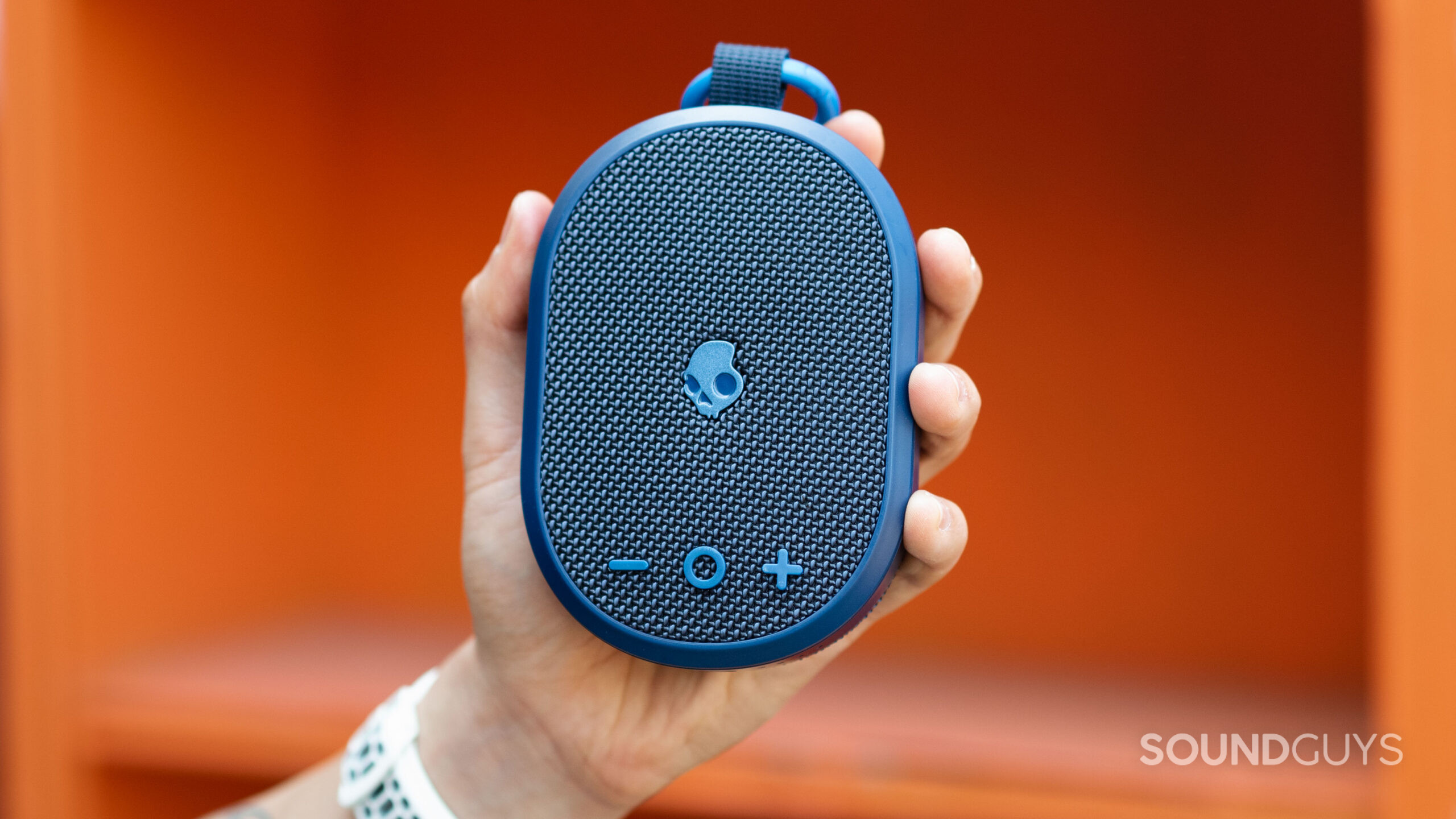
Skullcandy Kilo review: Best cheap waterproof speaker?
February 7, 2025
Skullcandy Kilo
Skullcandy’s colorful earbuds and headphones cater to the outdoor and budget markets, and the Skullcandy Kilo Bluetooth speaker is no different. This rough-and-tumble speaker can accompany you on your next adventure. It boasts a long battery life and a low price that separates it from the competition. Is the price just right for the Kilo, or should you save up for something more deluxe?
Skullcandy Kilo review: At a glance
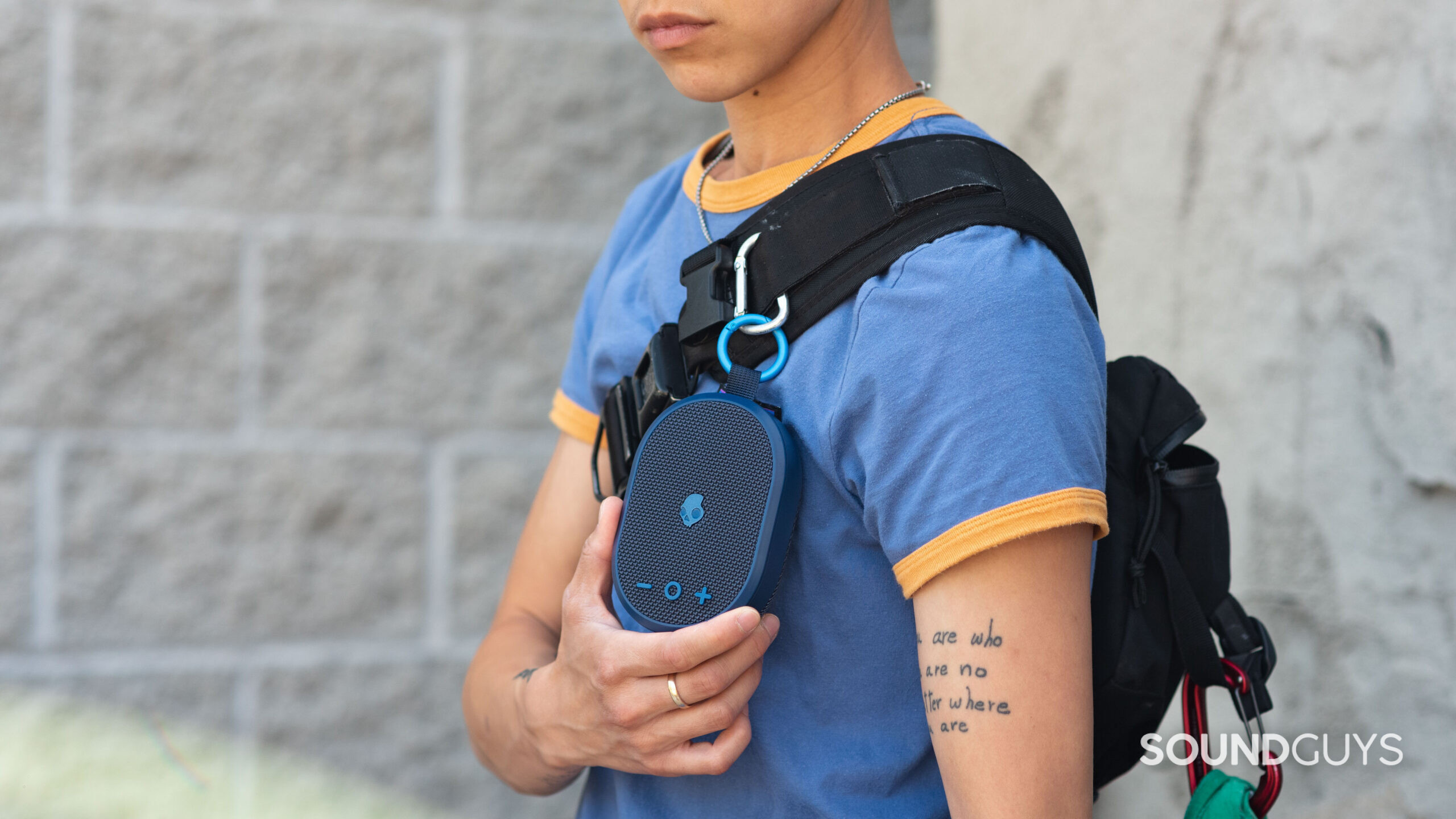
- What is it? The Skullcandy Kilo is a portable Bluetooth speaker that competes with more expensive options like the JBL Clip and UE Wonderboom series. The Kilo has a 24-hour battery life, a 45mm driver, and an IPX7 build.
- What is the price? The Skullcandy Kilo costs $39.99 in the US, CA$56.99 in Canada, and €39.99 in the EU.
- Where can you buy it? The Skullcandy Kilo was released on June 27, 2023, and is available globally through select retailers like Amazon and Walmart or through the Skullcandy website.
- Is it worth it? The Skullcandy Kilo is a good budget speaker for listeners who want something portable and loud. The carrying clip is small for our liking, but it works on most backpacks and lash straps. The build feels less refined than the competition, but the price is more reasonable. While the Kilo isn't the best Bluetooth speaker, it gets the job done for less.
What I like about the Skullcandy Kilo
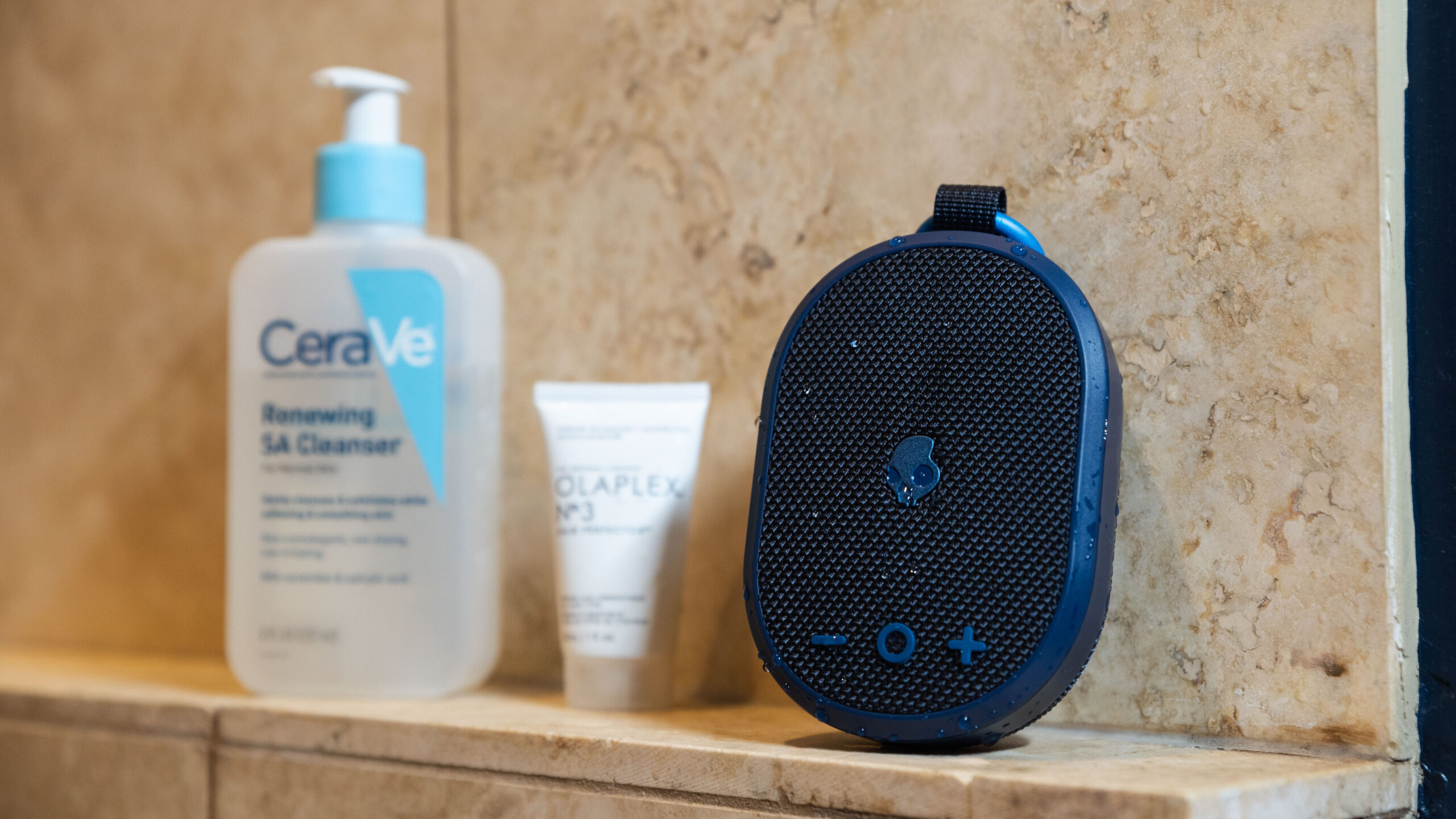
The Skullcandy Kilo is a high-value product that offers many of the same features as the JBL Clip 4 for about half the price. Skullcandy wraps this portly speaker in a water-resistant fabric that resembles many other rugged speakers. The material is grippy in wet conditions, and the large buttons are easy to find without looking. When I click the buttons, they provide the same degree of tactile feedback as the Clip 4.
Being decently compact, the Kilo is an excellent sidekick for various activities. Over the past couple of weeks, the Kilo has been my companion on bike rides and has quietly underscored some small outdoor gatherings with friends. I like the Kilo’s lightweight build (274g), which is half the weight of the JBL Flip 6 and only 34g heavier than the Clip 4.
The Kilo has an exceptionally long battery life for a portable speaker.
With its IPX7 water-resistant design, I can use the Kilo as a shower speaker without issue. When I listen in the shower, my phone stays in the bedroom. This scenario leaves two layers of drywall and eight meters between the Kilo and my iPhone 12 mini. The speaker maintains a strong connection to my phone even under these conditions.
When I first received the Kilo, I immediately topped up the battery and have yet to exhaust it. Skullcandy claims the speaker lasts 24 hours, and this tracks with my experience. After using it for about 14 hours, its LEDs indicate the battery is half full. When the battery dies, I can grab the USB-A to USB-C cable that Skullcandy includes. While the battery life is long, the charging time is too. When the time comes, I’ll have to set aside three hours — no fast charging here.
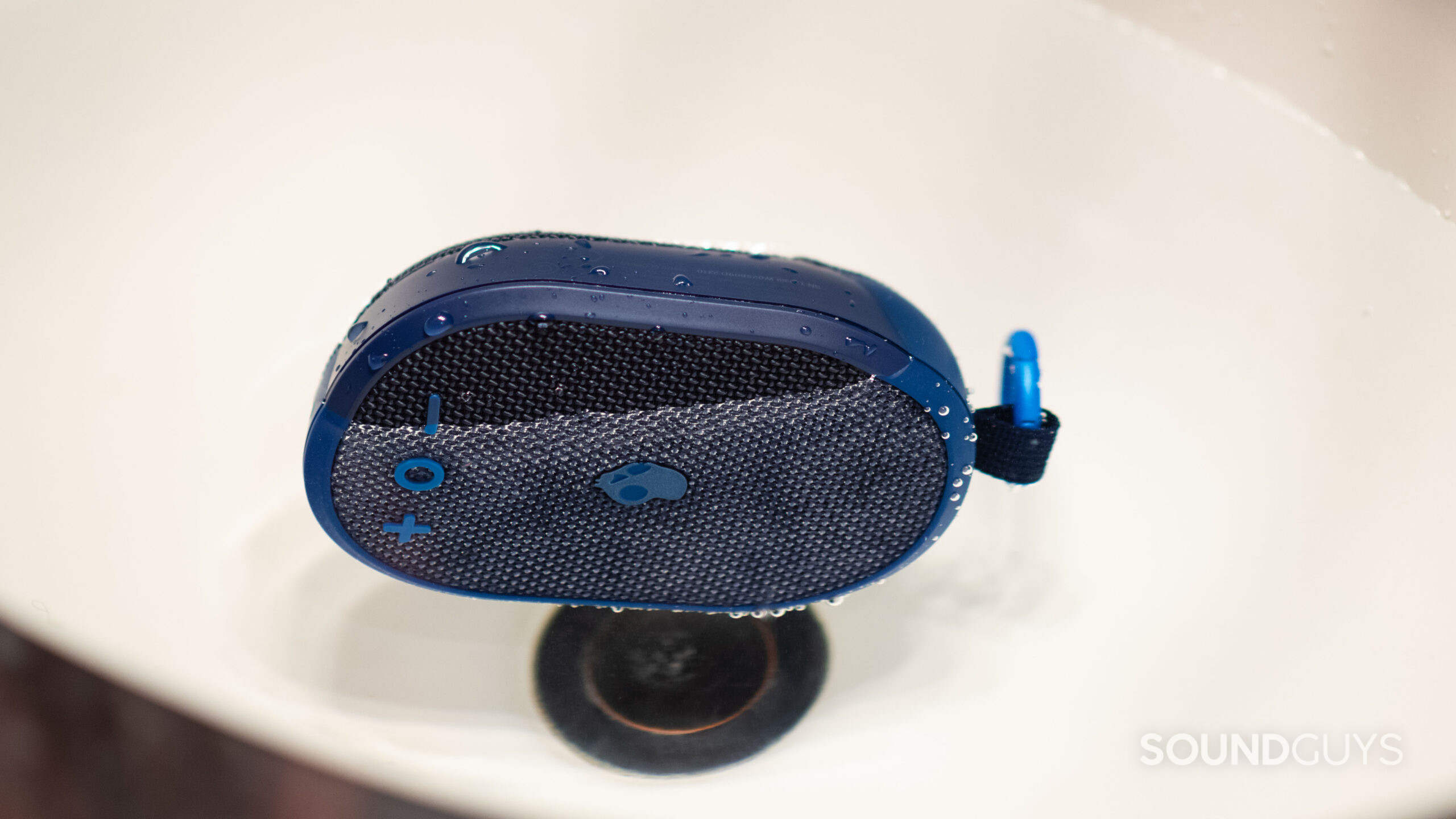
The sound quality is as I’d expect for a cheap Bluetooth speaker. It’s not bad: no disappointments here. It lacks any sub-bass or much bass at all, but vocals sound good. In the song “Letting Go” by Angie McMahon, McMahon’s voice comes through loud and clear during the first verse above the din of the guitar and backing drums. It’s difficult for me to hear McMahon’s self-harmony during the chorus, which is distinctly audible when listening with my Massdrop x Sennheiser HD 6XX ($199 at Drop).
What I don’t like about the Skullcandy Kilo
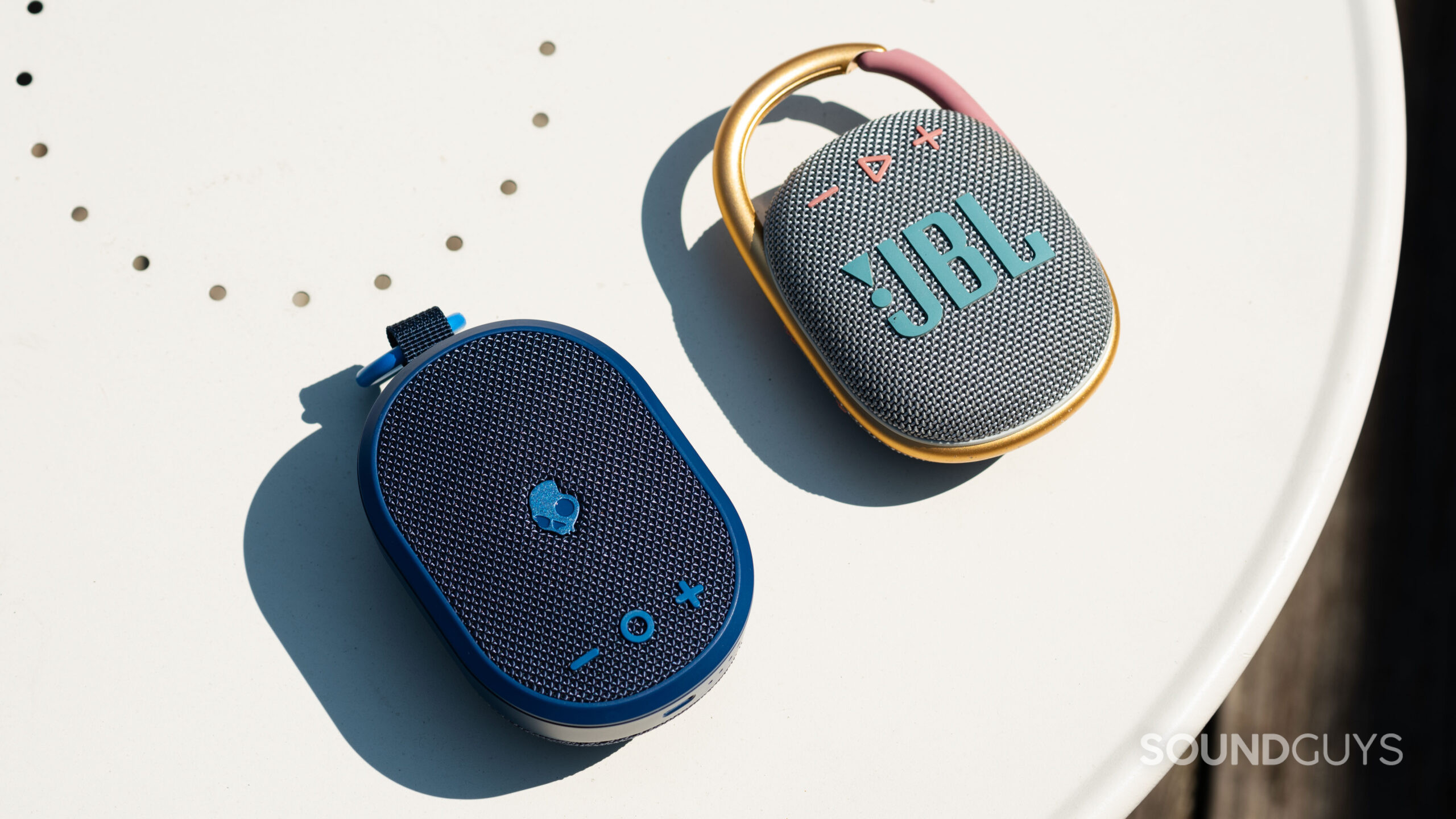
While the Skullcandy Kilo has fine audio quality for a $39 speaker, it doesn’t get as loud as its competitors. For reference, I stood one meter away from the Kilo and JBL Clip 4, maxing out the volume on each speaker while playing the song “Mona Lisa” by Dominic Fike. I measured each speaker’s loudness during the first chorus with a sound level meter. Under these conditions, the Kilo maxed out at 65 dBA and the Clip 4 at 75 dBA. This means the Clip 4 outputs sound that’s twice as loud as the Kilo but is smaller and lighter.
Loudness aside, the Kilo lacks a mobile app. This means there’s no opportunity for firmware updates to expand functionality down the line. What you get is all you’ll get. While this is a shame, given the price, it’s a reasonable concession. You’ll also notice that the Kilo doesn’t have a microphone, so you can’t use it as a speakerphone or activate your phone’s virtual assistant.
Even at max volume, the Kilo doesn't get very loud for its size.
My final gripe with the Skullcandy Kilo is that its plastic trim and the metal clip feel cheap. The clip’s hinge has a lot of lateral play that reminds me of free, cheaply-made carabiners I’ve received at various events. Ultimately, all those carabiners have broken at the hinge, and I suspect the Kilo’s clip will suffer the same fate. Also, the Kilo’s clip has an internal diameter of 25mm, giving you far less clearance than the JBL Clip 4’s mechanism. It shouldn’t pose a big issue, but I have to be more precise about attaching the Kilo than other portable speakers.
Skullcandy Kilo specs
The Skullcandy Kilo has quite a few tech specs to keep track of, and here are the most pertinent ones you should know before buying.
| Skullcandy Kilo | |
|---|---|
Size | 119 x 83 x 51 mm |
Weight | 274g |
IP certification | IPX7 |
Wired audio connection | N/A |
Wireless audio connection | Bluetooth 5.3 SBC |
Controls | Buttons |
Battery life | 24 hours (manufacturer's spec) |
Fast charging | N/A |
Connector | USB-C |
Price | $39.99 |
Skullcandy Kilo review: Should you buy it?
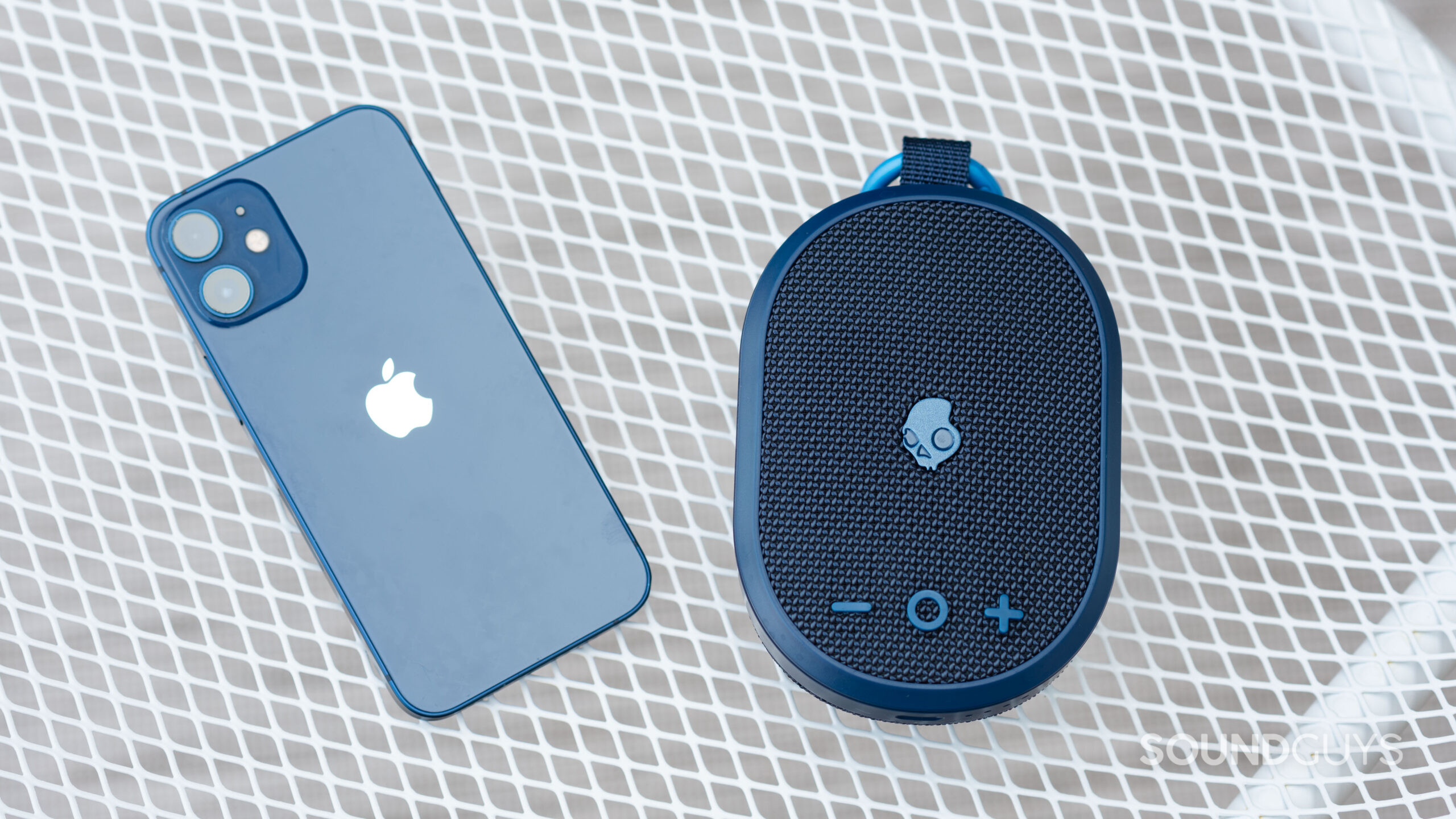
Listeners who want an affordable, rugged speaker with a long battery life should get the Skullcandy Kilo. The Kilo draws inspiration from premium products while offering a more palatable price tag. I appreciate Skullcandy’s rugged design and stereo support (with another Kilo speaker), but the experience is much less refined than more premium competitors.
The Kilo is a good speaker for the price, but a true adventure speaker needs dust and water resistance.
I recommend the Kilo if your budget is tight, but if you have more flexibility, the following options offer better sound quality and a more durable build.
If you want a similarly sized speaker with a significantly louder output, I recommend the JBL Clip 4 ($59 at Amazon). This is my go-to speaker for biking and city adventures. What sets the Clip 4 apart from the Kilo is its IP68 dust- and water-resistant rating. I’ve used this at the beach and set it down in the dirt since 2020, and it’s still kicking.
The UE Wonderboom 3 ($91.99 at Amazon) is another compact speaker that sounds great. It has an IP67 rating and floats. It can also connect to two devices at once. The battery lasts 14 hours, but you need to use a micro-USB cable to recharge the speaker.
Finally, for the same price as the Skullcandy Kilo, you can get the JBL GO 3 ($39 at Amazon). This shares the same textured design as the Kilo and weighs 63g less. It’s also more durable than the Kilo, with an IP68 rating. Officially, the battery life is just 5 hours, but in our testing, it lasted over 10 hours.

Skullcandy Kilo review: FAQs
There is no difference between the speakers other than in name and possibly color. The XT in the product name indicates that it is sold at Walmart and may have exclusive color options.
The Skullcandy Kilo has an IPX7 water-resistant rating so it can withstand one meter of submersion for up to 30 minutes.
No, the Skullcandy Kilo does not have a microphone for phone calls or Google Assistant.
No, the Skullcandy Kilo does not have app support.
Yes, the Kilo can float so that it won’t sink to the bottom of a pool. However, it’s not very useful when floating: it turns sideways so the speaker is perpendicular to the water and partially submerged. In other words, sound won’t radiate upward into the air when floating.
To enter pairing mode with the Kilo, press the “O” button to turn it on. Then, press the “O” button four times to enter pairing mode. Go into your phone’s Bluetooth settings > Pair new device > Skullcandy Kilo.
To enter wireless stereo pairing mode, follow these steps:
- Hold the “O” button for two seconds to power on the Kilo speakers.
- Press the “O” button three times on both Kilo speakers to initiate stereo pairing mode.
- Wait for the LED on each speaker to blink cyan and allow the speakers to pair with one another.
- Once paired, one speaker’s LED will glow yellow, and the other will glow cyan to indicate left and right channels, respectively.